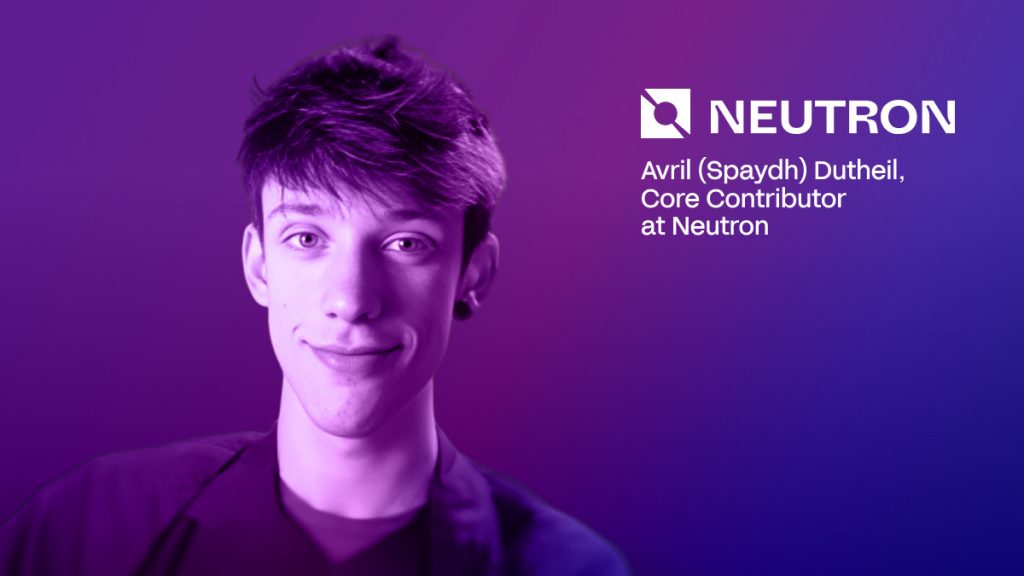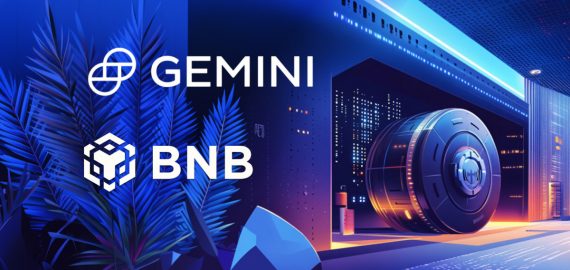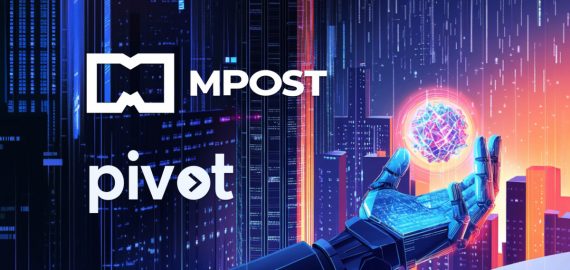Exploring Neutron’s Vision for Smart Contracts Beyond the Realm of DeFi


In Brief
Neutron’s core contributor, Avril Dutheil, discusses the innovative features of the Neutron blockchain platform, highlighting its smart contracts, interoperability, and blockchain technology, setting industry standards.

In this insightful interview, Avril (Spaydh) Dutheil, a Core Contributor at Neutron, delves into the innovative features of the Neutron blockchain platform. Dutheil explains how Neutron’s unique approach to smart contracts, interoperability, and blockchain technology is setting new standards in the industry, offering developers unprecedented power and flexibility while addressing key challenges in the Web3 ecosystem.
Can you elaborate on Neutron’s main solutions and how they are different from others on the market?
There’s one fundamental thing that makes Neutron completely different from any other smart contracting platform. When you’re building an application within the virtual machine of another blockchain, like the EVM on any of the EVM networks, the smart contracts are isolated to the virtual machine. They can run any code encoded in their smart contract, but they don’t have access to anything outside of the virtual machine.
This means there are strict constraints on the complexity of computation that can be handled, strict constraints on the security model of interoperability, and no access to consensus.
Contrary to other smart contracting platforms, Neutron provides safe and secure interfaces for smart contracts to leverage features and functionality that exist outside the virtual machine. For example, smart contracts on Neutron can customize transaction ordering and fees of some of the blockchain’s block space.
Our idea is to bring most of the benefits of having your own blockchain but make it available to smart contract developers without the additional cost and overhead of actually building a blockchain. This empowers them to build applications that they couldn’t build on any other smart contract platform.
How do IBC, ICA, and ICQ enhance the capabilities of smart contracts deployed on Neutron? What novel use cases do they enable?
IBC is a bridging standard, a method for two blockchains to communicate with each other. It relies only on the security of these two blockchains without introducing a third party like Wormhole or Axelar, which would reduce the security guarantees.
On this protocol, you can build applications to enable users or applications to do more advanced things. ICAs is one such application. Any smart contract on Neutron can register an account on another blockchain.
Moreover, you get the response of whether the action was successful or failed, which means you can program sequences of actions. For example, you might want to send tokens to the other blockchain, stake them, claim rewards, and bring them back to Neutron. You can program this entire sequence to happen with only one call sent by your smart contract.
ICQs provide the ability to read information from other blockchains. Smart contracts on Neutron can register queries that say, “Here’s the storage of this other blockchain. In this storage, I want you to look for this value and tell me what the value is.” An entity helps bring messages on both sides, and for a message to be accepted, it needs to provide proof that the message is valid.
This enables various use cases. For instance, if you’re building a game that accepts deposits from multiple blockchains, you can check the balance of the account where funds are supposed to be sent, verify the user’s address, and confirm if they’ve made the transaction with the correct memo or amount of tokens. For a liquid staking protocol like Drop, you can look at validators, calculate their on-chain performance, and check if they’ve been slashed, jailed, or tombstoned.
Can you provide any examples of innovative use cases for smart contracts beyond DeFi and cryptocurrencies?
With smart contracts you can build something like an Uber on the blockchain, where the marketplace and fee models are transparent, providing guarantees for both drivers and passengers.
Most games could benefit from this as well. You could be playing a Web2-like game with the certainty that the developer isn’t manipulating the market rules. At the same time, without the pain of having to select a wallet and sign every single transaction, as we currently have in Web3 games.
How do you think it’s possible to make a seamless bridge between Web2 and Web3 for newbies?
We’re working on programmable accounts for account login and ownership, allowing users to create accounts with Google email and phone biometrics for added security. This technology also allows for transaction signing without pop-ups from outside the app, allowing users to trust the application before executing transactions.
Fee abstraction is another important aspect, with technologies like Paymasters allowing applications to subsidize fees for users. Additionally, account abstraction and IBC can create an account framework that allows control of accounts over multiple IBC-connected chains while abstracting away the complexity of cross-chain transactions.
What challenges and opportunities do you foresee in the development of smart contracts that are resistant to quantum computing attacks?
We haven’t been focusing tremendous amounts of research on this yet. The reason is that there’s a wide cryptographic community that has been working on this problem for decades. To most of the problems that could arise in the short to medium term, there are already cryptographic solutions that defeat the advances of quantum computing.
Can you name some topics that, in your opinion, are not covered enough in the industry?
The industry has evolved from Bitcoin’s low programmability to Ethereum’s general programmability, which was a massive unlock. However, Ethereum has tremendous constraints, so people have been creating new domains like roll-ups and app chains.
I think the industry is overcompensating towards new domains. While this experimentation is valuable, it often misses two key points: solving interoperability and leveraging network effects.
This is where Integrated Applications have a differentiated quality. They offer most of the benefits of having your own app chain – customizability and power – but they also have the network effects of smart contracts. They can compose synchronously, stack on top of one another, and share components, allowing for a better ecosystem.
I think this shift in how we build is currently being overlooked. The industry got excited about the modular thesis, but I believe we’ll see a correction toward integrated technologies as well because they also have tremendous benefits.
How do you foresee the state of blockchain in 3 years?
We’ll continue to see more domains launching. Interoperability technologies will become more prominent as network effects and fragmentation become bigger concerns.
I hope that in three years, most of the UX pain points we face today will be addressed. I envision a network of interconnected chains with local hubs. Blockchains like Solana, Ethereum, Neutron, Avalanche, and Fantom will remain as local hubs, connecting to various roll-ups or app chains that do one thing really well. Users will be able to move between these app chains seamlessly.
I don’t think there will be one standard for the entire industry. There will likely be a fragmentation of standards. OPStack might have one implementation that connects all their roll-ups. Other networks might push for their own versions of IBC. However, I think IBC will be the largest standard because it has years of advances, and we’re seeing exciting networks like Celestia, dYdX, and Dymension choosing the Cosmos SDK and IBC to build their app chains and layers.
Disclaimer
In line with the Trust Project guidelines, please note that the information provided on this page is not intended to be and should not be interpreted as legal, tax, investment, financial, or any other form of advice. It is important to only invest what you can afford to lose and to seek independent financial advice if you have any doubts. For further information, we suggest referring to the terms and conditions as well as the help and support pages provided by the issuer or advertiser. MetaversePost is committed to accurate, unbiased reporting, but market conditions are subject to change without notice.
About The Author
Victoria is a writer on a variety of technology topics including Web3.0, AI and cryptocurrencies. Her extensive experience allows her to write insightful articles for the wider audience.
More articles

Victoria is a writer on a variety of technology topics including Web3.0, AI and cryptocurrencies. Her extensive experience allows her to write insightful articles for the wider audience.

















































